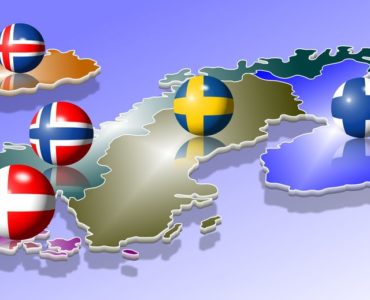One of the most widely spoken languages in the world, Spanish originated from a mixture of Latin and local dialects of the peoples of the Iberian Peninsula around the 5th century. Here are 12 facts about the Spanish language.
Fact 1: There are a lot of words in Spanish. The good news is that we know their exact number!
Spain’s official agency for the study of the national language, the Real Academia Española (RAE), has calculated that there are 93,111 words in Spanish. Plus about 19,000 more words borrowed from English. In total, the Spanish lexicon is over 120,000 words.
Fact 2: Spanish is the fastest language in the world. Like the Japanese
Spaniards sometimes speak so fast that you can barely catch the meaning. This is not surprising, because Spanish, along with Japanese, is the fastest language in the world. The speed of a language is determined by the number of syllables an average native speaker can say per second. In contrast, the slowest languages are German and Mandarin Chinese.
Fact 3: Spanish is also a very common language.
According to Ethnologue, Spanish ranks second in the world in terms of the number of speakers – over 470 million, second only to Chinese. If we take the number of native speakers, as well as those who use Spanish as a second language, then Spanish will already be in fourth place (total 572 million Spanish speakers). Top three: English, Chinese and Hindi. Which, in general, is logical, given that English is an international language, and there are simply so many Indians and Chinese that they don’t even need to count those for whom Mandarin and Hindi are not native languages.
Fact 4: In 20 years Spanish will take over the USA
Currently, the country with the largest Hispanic population is Mexico. Over 100 million people speak Spanish there. But, according to the Instituto Cervantes, the USA will overtake Mexico by 2050. Scientists have calculated that by this time Hispanics will make up 132.8 million of the total number of all US residents. In addition, the United States has the most Spanish learners in the world. In second and third places are Brazil and France.
Fact 5: Spanish (Castilian ) VS Christian (Cristiano)
After the Moors took over southern Spain and established their dominance there, the locals began to use the word cristiano (Christian) to distinguish people who spoke Spanish from those who spoke Arabic. Thus, the language began to be called cristiano instead of castellano. It is believed that the term castellano is etymologically related to the places where Spanish was first spoken after the Romans left Iberia. Castellano (Castilian) is now often referred to as Spanish to distinguish it from the other official languages of Spain: Basque, Catalan (including the very similar Valencian and Balearic), Galician and Aranese.
Fact 6: Spanish is spoken not only in Spain and Mexico
Spanish speakers live in Europe, America, Africa, Australasia and even Antarctica. In Europe, Spanish is spoken in Spain. In America – throughout Central and South America (with the exception of Brazil), in Africa – in Equatorial Guinea, in Australasia – on the Chilean Easter Island and in parts of Polynesia, and in Antarctica – in Fortin Sargento Cabral (part of Argentina) and in Villa las Estrellas (part of Chile). It is said that this is due to the Spanish-speaking settlers who brought a layer of their native language to these places.
Fact 7: The letter ñ is not only in Spanish
The letter ñ only appeared in the 18th century, and Spanish is not the only language in the world that uses it. This letter is also found in Galician, Basque, Aymara (Bolivia), Quechua (Peru), Mixtec (Mexico), Zapotec (Mexico), Breton (France), Guarani (Paraguay) and Tagalog (Philippines) languages. So, if you thought that the letter ñ is such an exclusive of the Spanish language, it is not.
Fact 8: Special letters E, A, O, L and S
A few more dry statistics. The vowels “E”, “A” and “O”, as well as the consonants “L” and “S” are the most common in Spanish. The letter “E” ranks first, being used in 16.78% of words, followed by “O” (11.96%), “L” (8.69%) and “S” (7.88%). The letter “W” is the least used. Not that it was important to remember or memorize. No. Just know that someone cares a lot about this, and he considers it!
Fact 9: The letter H seems to be there, but it seems to be not
“H” is an amazing letter of the Spanish alphabet. It is actively used when writing words, but is not pronounced. True, there is still one exception: “H” is pronounced if it follows the letter “C”. All other letters are usually pronounced unless the person has a strong regional accent. Many words that begin with the letter “H” were actually borrowed from Latin and were originally written with the letter “F”. So, for example, farina became harina (flour).
Fact 10: Relationship between Spanish and Arabic. You don’t see her, but it’s there
Arabs dominated Spain for about 800 years. During this time, the Arabic language, despite its seemingly fundamental dissimilarity to Spanish, had a noticeable influence on it. According to linguists, it is quite easy to distinguish a word that was borrowed from Arabic. It often begins with the letter “al”, such as alfombra (carpet), almendra (almond) or almohada (cushion).
Fact 10+: You can’t leave an exception
For almost 200 years, the letter combinations Ch and Ll were part of the Spanish alphabet, until in 1994 the Real Academia Española decided to abandon them. Although Ch and Ll are no longer considered separate letters, they are still commonly used in Spanish. Most likely, the academies decided to follow the path of simplifying the language. In general, the exclusion of a letter from the alphabet and, consequently, from the language, is not such a rarity. The same thing happened, for example, with the Russian Ѣ.





